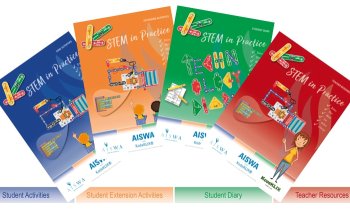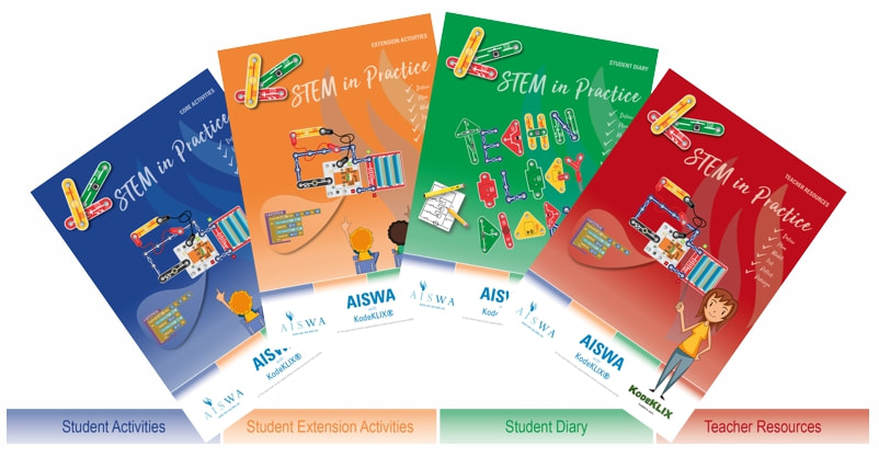The STEM in Practice printed publications provide teachers with everything needed to start teaching electronics and coding. Included in the educationally sound support materials are structured and open-ended activities, tips and curriculum insights for teachers and a student workbook for reflecting on concepts presented. The extension kit (used with the extension activity book) empowers capable students to develop design solutions using a range of sophisticated electronics components.
STEM in Practice books can be bundled with class sets or purchased separately directly from AISWA online bookshop or the STEM in Practice Resources page.
AISWA also regularly host Professional Learning workshops for teachers using the STEM in Practice course work and KodeKLIX®. Check the AISWA Website for the dates of upcoming sessions, or AISWA's Event Calendar.
The STEM in Practice publications encourage active, challenge-based problem-solving; samples from the materials can be viewed by clicking the respective highlighted heading links below for each book in the series.
|
Student Core Activity Book: guided activities with circuit and assembly diagrams, examples of code, explanations, discussion points and problem solving activities.
This book's project activities are focused on components in the KodeKLIX® Core Kit and builds the foundation of circuit and coding know-how. |
Student Extension Activity Book: this book provides guided activities for a range of sophisticated electronics components with circuit and assembly diagrams, examples of code, explanations, discussion points and problem solving activities.
This book provides example project activities for the more advanced extension kit components. |
Student Workbook: a practical workbook for individual use, with questions, puzzles, engineering design process tasks and problem-solving activities. Includes cross-curricula activities; suitable for assessment purposes; for use in class or for homework; a powerful aid for student reflection and vocabulary/concept development.
|
Teacher Resource Book: a comprehensive teacher support resource with STEM curriculum links, pedagogical insights, web-resources and additional authentic problem solving activities for group work.
Project ideas encourage students to move their circuit and coding skills 'off the board' and build these into engineering style problem solutions. |



